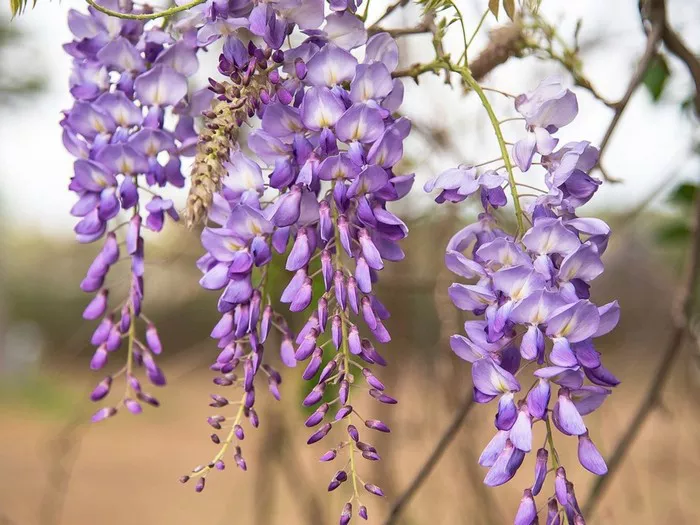Wisteria, with its cascading blooms and enchanting fragrance, is a beloved addition to gardens around the world. Gardeners often turn to cuttings to propagate new wisteria plants, seeking to replicate the beauty of this vine in their own landscapes. However, one question frequently arises: How long do wisteria cuttings take to flower? In this article, we delve into the intricacies of wisteria propagation, exploring the factors that influence flowering time and providing insights to guide gardeners on their journey to wisteria blooms.
Understanding Wisteria Propagation
Before delving into flowering times, it’s essential to understand the basics of wisteria propagation. Wisteria can be propagated through various methods, including seeds, layering, and cuttings. While seeds are a viable option, they often take several years to mature and flower, making them less popular among gardeners seeking quicker results. Layering involves encouraging a stem to root while still attached to the parent plant, but it can be a time-consuming process. Cuttings, on the other hand, offer a more efficient way to propagate wisteria, providing a quicker route to flowering.
The Cutting Process
Propagation via cuttings involves taking a portion of a wisteria plant, typically a stem or shoot, and encouraging it to develop roots and grow into a new plant. The process typically begins by selecting a healthy, mature stem from the parent plant. This stem is then cut from the parent plant and prepared for rooting.
Before planting, it’s essential to treat the cutting with rooting hormone to stimulate root development. Once treated, the cutting is planted in a well-draining potting mix and placed in a warm, sunny location. Regular watering and monitoring of moisture levels are crucial during the rooting process to ensure the cutting remains hydrated and healthy.
Factors Influencing Flowering Time
Several factors influence the time it takes for wisteria cuttings to flower:
1. Wisteria Variety
Different wisteria varieties may have varying flowering times. Some varieties are known for their early flowering habits, while others may take longer to bloom. When propagating wisteria from cuttings, it’s essential to consider the specific variety to manage expectations regarding flowering time.
2. Age of the Cutting
The age of the cutting plays a significant role in flowering time. Younger cuttings may take longer to mature and produce flowers compared to more mature cuttings. Selecting older, more established stems for propagation can potentially shorten the time to flowering.
3. Growing Conditions
The growing conditions provided to the wisteria cutting also influence flowering time. Adequate sunlight, water, and nutrients are essential for healthy growth and flowering. Providing optimal growing conditions can help expedite the flowering process.
4. Root Development
Root development is critical for wisteria cuttings to support healthy growth and flowering. While some cuttings may root quickly, others may take longer to establish a robust root system. Once roots are well-developed, the cutting can allocate more energy towards foliage and flower production.
Estimated Time to Flowering
The time it takes for wisteria cuttings to flower can vary significantly depending on the factors mentioned above. On average, wisteria cuttings may take anywhere from two to five years to flower after propagation. However, this timeline is not set in stone and can vary based on individual circumstances.
Tips for Encouraging Flowering
While the flowering time of wisteria cuttings may seem lengthy, there are steps gardeners can take to encourage earlier blooming:
1. Pruning
Regular pruning can help promote flowering in wisteria plants. Pruning encourages the development of lateral shoots, which are more likely to produce flowers. By shaping the plant and removing excess growth, gardeners can focus the plant’s energy towards flower production.
2. Fertilization
Applying a balanced fertilizer formulated for flowering plants can provide wisteria with the nutrients needed for robust growth and bloom production. However, it’s essential not to over-fertilize, as excessive nitrogen can promote foliage growth at the expense of flowers.
3. Patience and Persistence
Ultimately, patience is key when waiting for wisteria cuttings to flower. While it may take several years for cuttings to reach maturity and produce blooms, the reward of vibrant wisteria flowers cascading from the vine is well worth the wait. Gardeners should remain persistent in providing optimal care and conditions for their wisteria plants, knowing that the spectacle of flowering wisteria awaits.
Conclusion
Wisteria cuttings offer a promising method of propagating new plants, allowing gardeners to enjoy the beauty of this captivating vine in their own gardens. While the time it takes for wisteria cuttings to flower may vary, understanding the factors influencing flowering time can help manage expectations and guide gardening practices. By providing optimal growing conditions, practicing patience, and employing techniques to encourage flowering, gardeners can look forward to the breathtaking sight of wisteria blooms gracing their landscapes.


